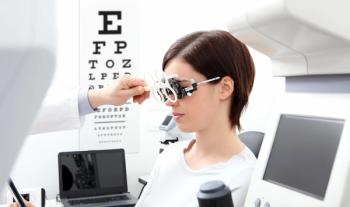
Circulating microRNA expression potentially identifies new TED biomarkers
New research identifies potential new TED biomarkers based on the disease activity or inactivity.
Korean researchers identified circulating microRNA (miRNA) expressions in patients with thyroid eye disease (TED) based on the disease activity or inactivity, thus providing new insight into the biological mechanisms driving the disease.1
The perceived importance of miRNAs has been increasing in recent decades. Specifically, the researchers explained, miRNAs are a class of noncoding RNAs that post-transcriptionally regulate gene expression and are involved in a wide range of physiological and pathological processes.2
“In the past few decades, miRNAs have received increasing attention due to their roles in regulating gene expression. Deregulation of miRNAs results in mRNA dysfunction, leading to the development of pathologic conditions.”
Namju Kim, MD, lead author from the Department of Ophthalmology, Seoul National University Bundang Hospital, Seongnam, Korea, and colleagues described a study with the goal of characterizing the miRNA expression signatures in patients with TED and identify miRNA biomarkers of disease activity.
Kim stated, “Although enormous progress has been made in elucidating the pathogenesis of TED, the exact mechanism of TED remains elusive, and therapeutic challenges and dilemmas remain."
The team first isolated the total RNA from the sera of 10 patients with TEDand 5 healthy controls using an assay to comprehensively analyze 798 miRNA expression profiles. Analysis of specific miRNA signatures, mRNA target pathway analysis, and network analysis were performed, they explained.
The patients with TED were divided into two groups based on the activity or inactivity of the disease. Upon analysis of the miRNAs, the investigators found that 173 differentially down-regulated miRNAs were identified in the patients with TED compared with the healthy controls.
“Ten circulating miRNAs were differentially expressed between the active and inactive TED groups and regarded as candidate biomarkers for TED activity: 1 up-regulated miRNA, miR-29c-3p; and nine down-regulated miRNAs, miR-4286, miR-941, miR-571, miR-129-2-3p, miR-484, miR-192-5p, miR-502-3p, miR-597-5p, and miR-296-3p, the authors reported.
In a validation cohort, the expression levels of 2 of the down-regulated miRNAs, miR-484 and miR-192-5p, were significantly lower in the patients withactive TED compared with the patients with inactive TED.
The authors concluded that becausethe expression levels of miR-484 and miR-192-5p differed significantly between the active and inactive TED groups, these miRNAs have the potential to serve as circulating serum biomarkers of disease activity. However, they advised that larger futurestudies should validate the current findings of these miRNAs.
References
1. Kim N, Choung H, Kim YJ, et al.Serum microRNA as a potential biomarker for the activity of thyroid eye disease. Sci Rep. 2023;13:234; https://doi.org/10.1038/s41598-023-27483-w .
2. Xiao C, Rajewsky K. MicroRNA control in the immune system: Basic principles. Cell. 2009;136:26–36.
Newsletter
Want more insights like this? Subscribe to Optometry Times and get clinical pearls and practice tips delivered straight to your inbox.
















































.png)


